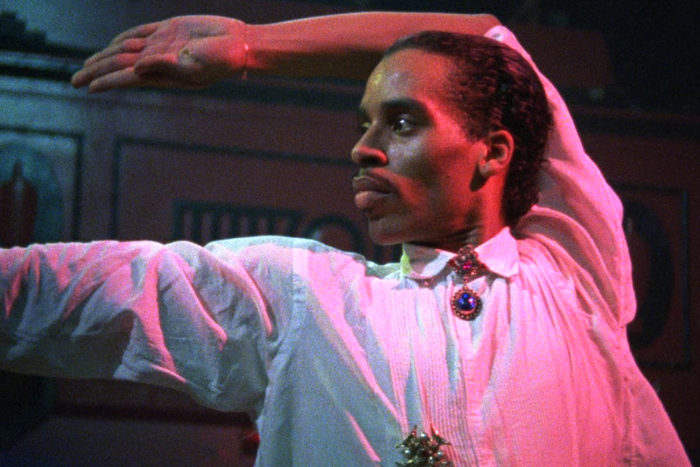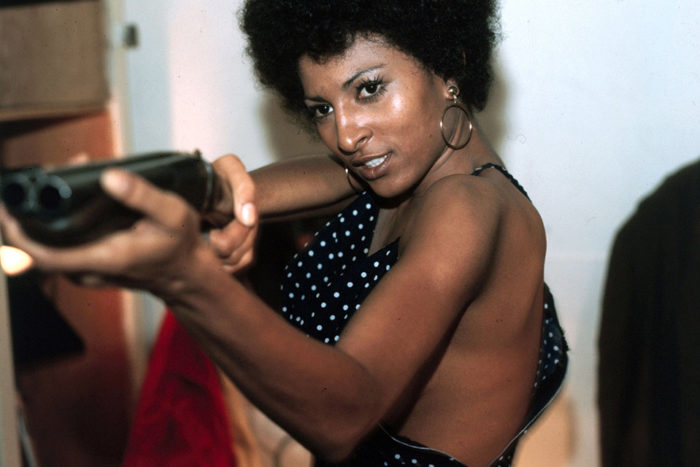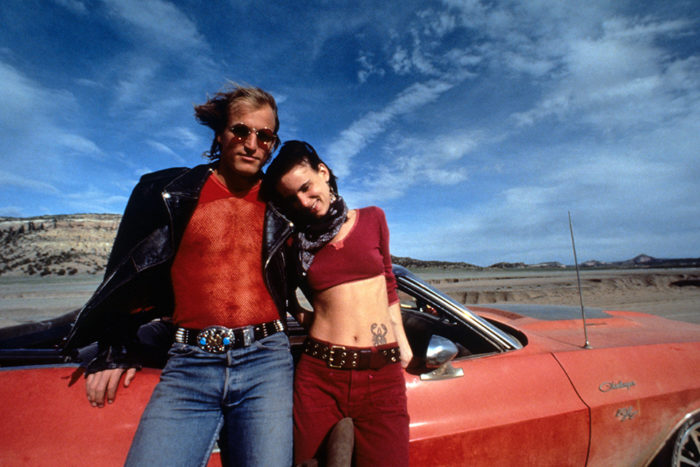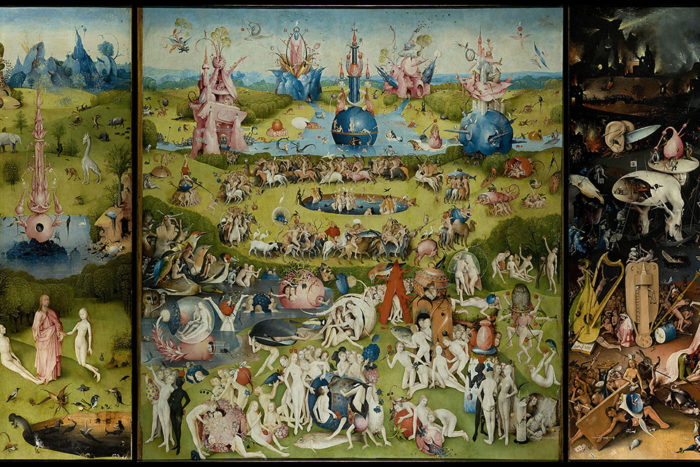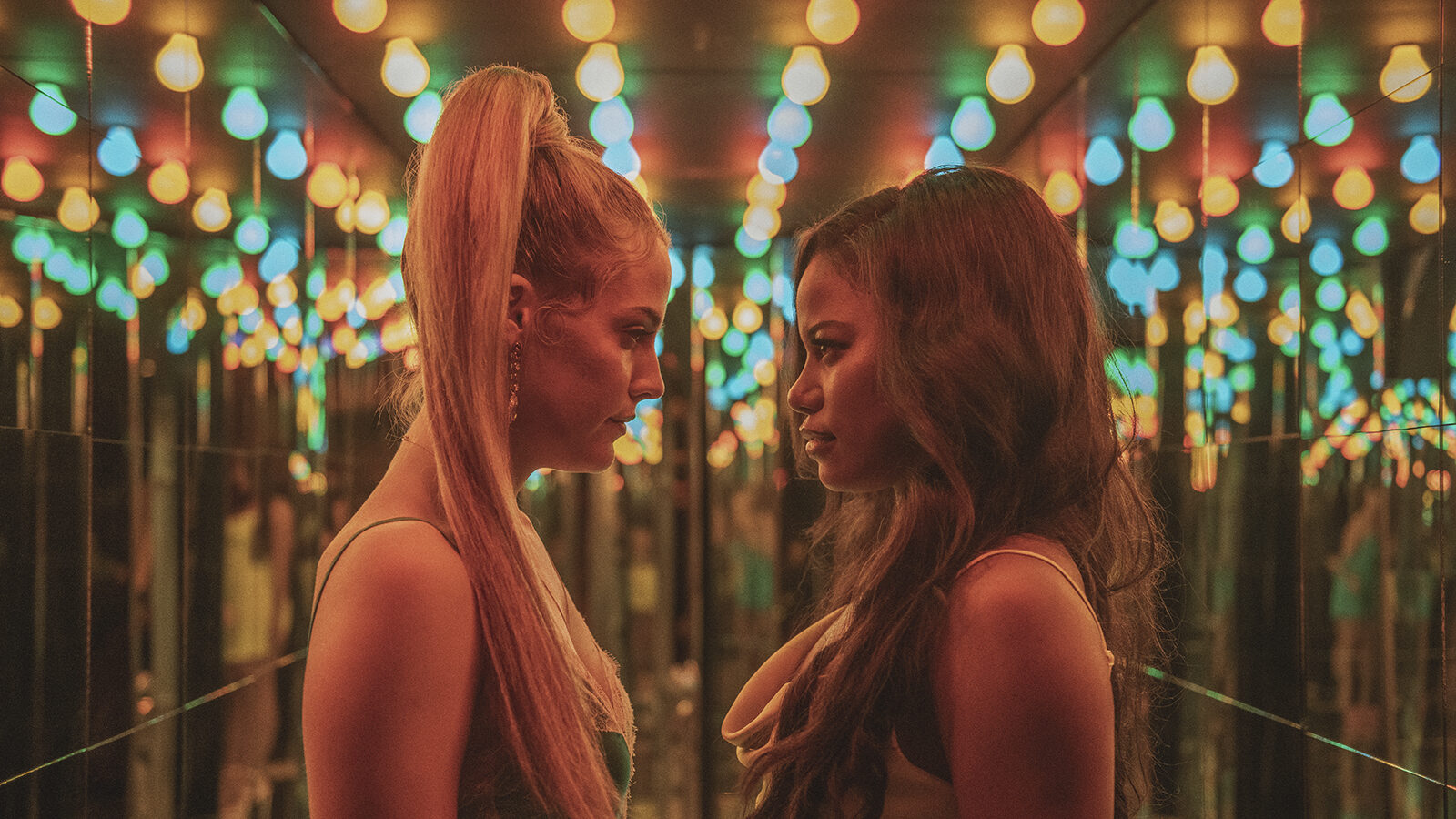
Personal Hell
We were very fortunate to shoot on 16mm. Theater is my background, and moving into film, what I wanted most from this experience was to have the material matter. I didn’t want high gloss, I wanted something more textured with soft edges. The story itself is a time capsule. It was written by a girl who was 19, from Detroit, as a Twitter thread, and I wanted her to walk away from this experience knowing it was important, and [shooting on] film made it feel important.
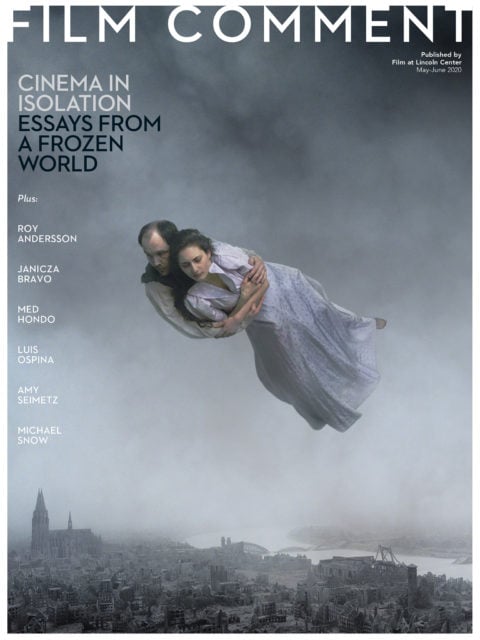
I had a short list of films I pulled from. My DP Ari Wegner and I started with blaxploitation movies, because I wanted to see a wealth of films starring black women who were superheroes—of that series, we landed with Coffy. I also pulled from Paris Is Burning, because I loved the look of the ballroom—the focus being very much on the one who was onstage, but also feeling most of the room falling into a blackness. And I had never been to a strip club, but I of course had to go to one.
The Wiz was another one, but that was a bit more emotional for me. You have this young woman who feels bored by her home life, and wants to leave and wants adventure, and then she is pulled into this world where she learns the vocabulary, and she meets three people who become her friends. And I watched Natural Born Killers a lot. It was like a mania, but it also felt safe. One of the other things about Florida is the pink light, like in Spring Breakers and Moonlight. I studied Spring Breakers, and said we can’t do anything they are doing.
There’s a Bosch painting called The Garden of Earthly Delights that inspired me. The painting is Heaven, Earth, and Hell. In Zola, home is heaven, so it’s desaturated and soft, and once you leave home and enter Earth—this drive away to Tampa—it becomes more saturated. Once you are in the third act, which is demonic, [the palette] is black with an aggressive red—biblical in a way. What’s so special about that painting is that it’s totally nonsense and chaos, and that’s what [the film’s] third act should feel like once night sets in.
Before Taylour Paige and Riley Keough’s characters, Zola and Stefani, leave home for Tampa, they have a text exchange where Stefani is seducing Zola—I really wanted to replicate these Deana Lawson photos there. More in my framing and the angle. I think with the Twitter world there [could have been] a version of this movie that is very haphazard and shaky, but I am very drawn to this pristine blocking and composition.
And we used the work of Suffer Rosa, a young man in Argentina. He posts on Tumblr and has his work on Instagram. There is something distant, but not cold, about it. It’s mostly empty spaces, but I kept being drawn in. I ended up writing to him, and I thought we should be pulling from this internet space. I think the film as a whole is a love letter to the internet. There is a kind of lawlessness to the internet—raucous, funny, racist, violent, and nasty. I hope the film feels like it does the thing that that space does.
As told to Nicolas Rapold
Janicza Bravo is the director of Zola, which will be released by A24 Films.



